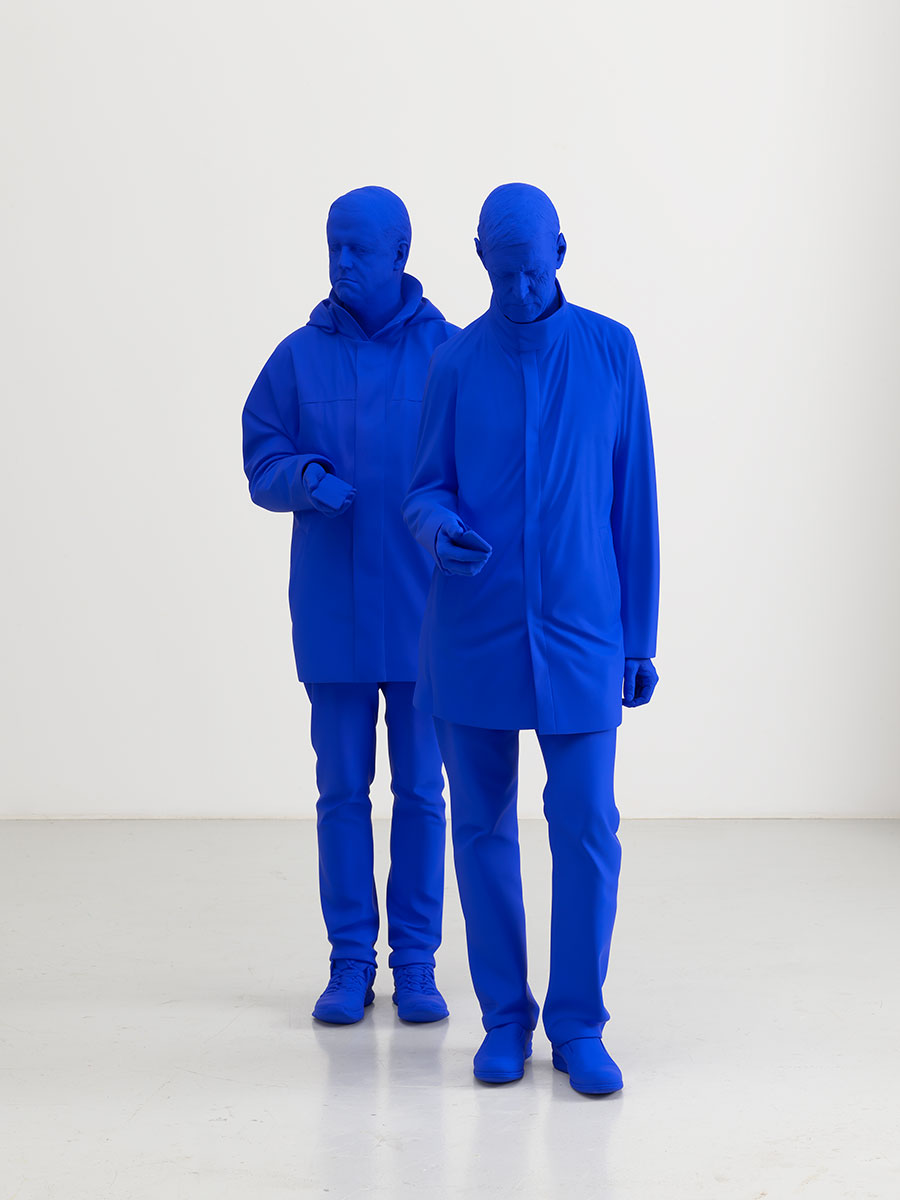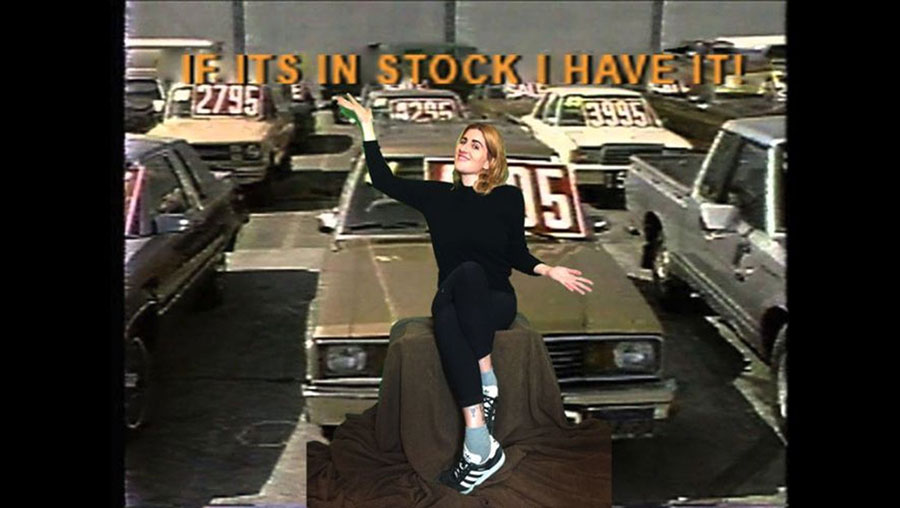The Best Shows to See in LA
From ‘a coven of witches’ at Deitch Projects to the ‘totemic roughness’ of Huma Bhabha at David Kordansky Gallery, our critic’s guide to Los Angeles
From ‘a coven of witches’ at Deitch Projects to the ‘totemic roughness’ of Huma Bhabha at David Kordansky Gallery, our critic’s guide to Los Angeles

Cyprien Gaillard
Sprueth Magers
11 February – 21 March
Indebted to the psychedelic geology of Robert Smithson, Cyprien Gaillard’s exhibition is an odyssey across urban infrastructure and ancient seas. In Ocean II Ocean (2019), a short film which premiered at the 58th Venice Biennale, images of fossilized nautilus shells are deliriously sedimented with the interlocking logo of the New Jersey public transit system and the spiral of a flushing toilet. New sculptures on display, comprised of delicate limestone sheets full of fossils and beefy metal armatures, nod to subways from New York to Moscow to Stockholm – and to the Purple Line currently under construction beneath Sprueth Magers.

Tishan Hsu
Hammer Museum
26 January – 19 April
This survey of Tishan Hsu’s sculptures and paintings from the 1980s to 2005 features an uncanny, organic minimalism of hard, alien surfaces. Sharp clefts and orifices reveal almost-bloody coagulations of colour. The works’ topographic surfaces are often interrupted by tubes, drains, wheels and tiles that serve as visual sutures as much as handles. Paintings of vent-like forms and stains accent their bright, factory-fresh pastels. Installed both on the wall and floor, they seem intended for a mysterious, possibly sinister use.

Katharina Fritsch
Matthew Marks Gallery
13 February – 2 May
Katharina Fritsch’s Hahn/Cock (2010/13), a royal blue fiberglass rooster at the scale of an equestrian bronze, surveyed Trafalgar Square from the Fourth Plinth in 2013. For her first solo exhibition in LA, a new, indoor version of the work sits on a neon green pedestal, just as monumental; accompanying Hahn/Cock is Zwei Männer/Two Men (2019), a pair of life-size blue sculptures of men checking their mobile phones. The shuffling businessmen, zipped up in their coats, forego the classical, self-aggrandizing poses of great leaders for a more honest image of today’s distracted elite. Their size notwithstanding, Fritsch’s sculptures are brutally modest.

Parker Ito
Château Shatto
8 February – 4 April
Two new paintings by Parker Ito synthesize two types of light LA is known for: sunset, against a smoggy skyline and a scattering of lit office buildings, and the harsh flash of a camera. In good luck charm (2020), the papery, numinously saturated edges of a spray of orchids, an empty wine bottle and a crystal pink butt plug are rendered with glassy realism. The paintings are suspended on either end of the gallery in front of windows with skyline views. The walls in between them are rimmed with chirping electronics arranged, not too carefully, on un-primed linen; printers unspool pages of code while flatbed scanners stroke chrome statuettes, like the hot process behind these cool yet heart-breaking paintings.

‘All of them Witches’
Deitch Projects
8 February – 11 April
This ‘coven’ of 78 artists – nearly all of them women – assembled here by co-curators Laurie Simmons and Dan Nadel claims the idea of the witch in a way that spans pop feminism and practical magic: anti-establishment but business-savvy, clad in black but prone to flights of colour. The show ranges wildly, from underwater photography to intricate beadwork; from erotica to runes; from the cool appropriations of Sarah Charlesworth to the cosmic heat of Judith Bernstein. And, of course, work by Cameron – an actual, self-proclaimed LA witch.

Postcommodity
LAXART
5 January – 29 February
At non-profit LAXART, California-based collective Postcommodity turn their critical eye to two pillars of the institution: a pair of H-beams just inside the gallery’s entrance. The style of their intervention is also its substance: the artists hired an automotive painter to decorate these two spans of rolled steel with the deep, glittering finishes and pinstripes of vintage lowrider cars. Postcommodity also commissioned a pair of dust covers, institutional white on the outside, with brightly upholstered interiors that recall coffins as much as seats. As the fuchsia and teal beams enter the institution’s care, ideally in perpetuity, Chicanx car culture remains at the core of the work.

Megan Plunkett
The Gallery @ El Centro
1 November – 29 February
In a photograph of a cowboy silhouette posed behind an empty bar, the camera flashes in the mirror – an echo of Jeff Wall echoing Manet. This cardboard cut-out ranger presides over a lonesome scene: Megan Plunkett’s photos are installed on beige cinderblocks in a utility room. Lit only with a couple of fluorescent fixtures and cluttered with pipes, a series of a dozen images of the cowboy’s legs, inverted in a corner near some tables, are unframed and discomfitingly low-slung. The room they’re in is like the room they depict: refreshingly raw, an empty party with the lights on and nothing left to the imagination.

Huma Bhabha
David Kordansky Gallery
25 January – 14 March
The powerful, totemic roughness of Huma Bhabha’s sculptures comes partly from the artist’s saw; but there is also something ominous about the masses of burned cork and Styrofoam from which she coaxes a familiar symmetry of clefts, faces and limbs. The hierarchy between synthetic and natural materials is lost along with those between genders, cultures and eras. Mask of Dimitrios (2019), with its two limp plastic bags for lungs or breasts and lumpy columns of wire for legs, has merged with the chair on which it sits. Bhabha pictures human beings as clumsy but imposing hybrids – perhaps in celebration, perhaps in warning.






















